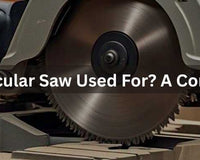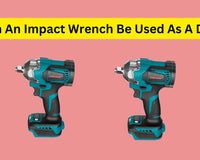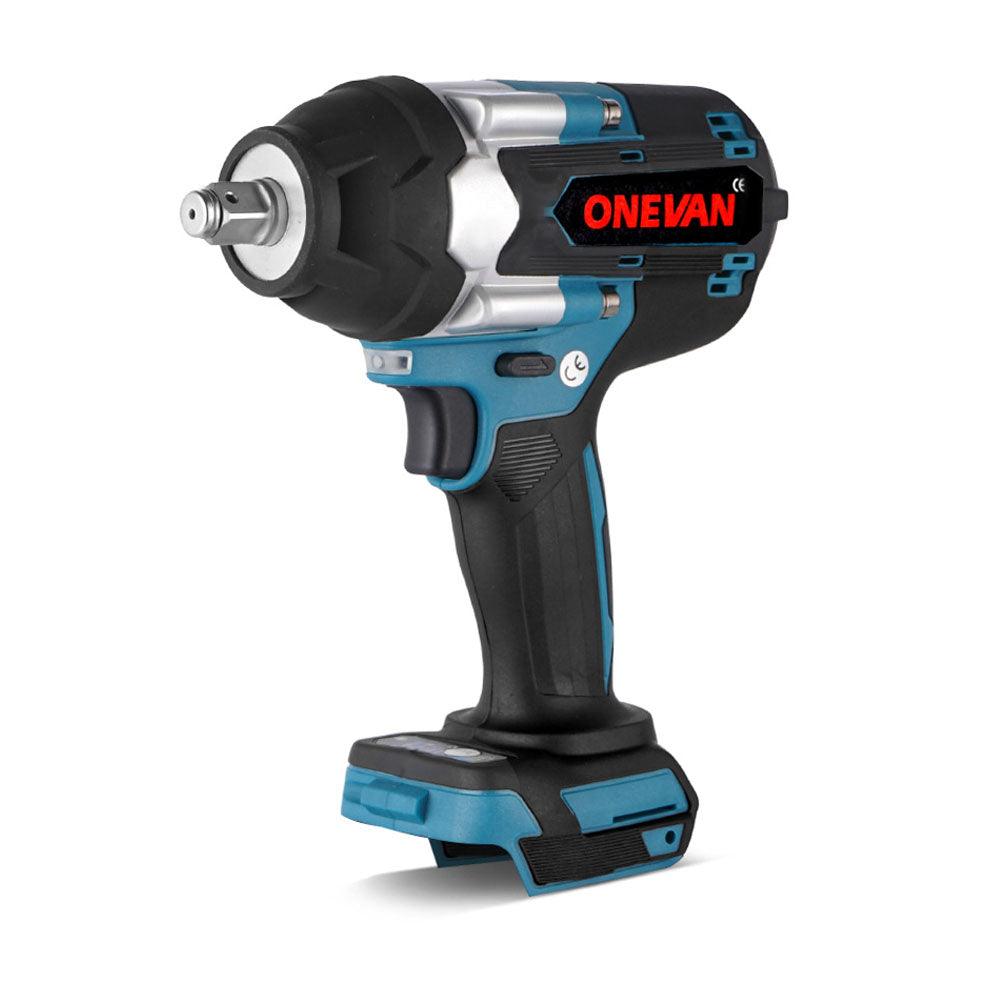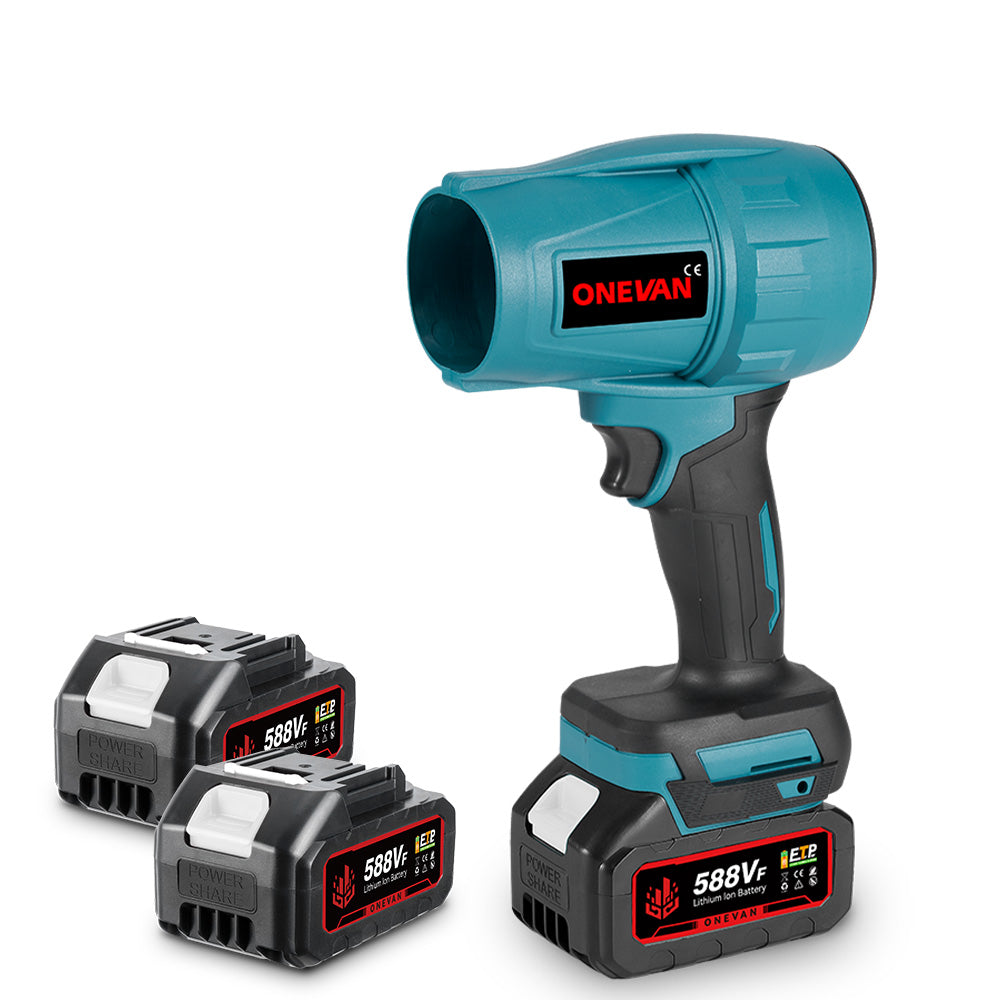Changing a circular saw blade is a fundamental skill every user should master. First you need to power off the cordless circular saw and engage the spindle lock. Next, loosen the arbour net and remove the old blade. So you see it is pretty simple. However, it is crucial to have a sharp blade, as dull blades can lead to poor cutting performance and increased risk of accidents. In this guide, you will get the practical knowledge and step-by-step process with practical details that will help both beginners and experienced users.
1. What Makes Cordless Circular Saws Different
You know what's great about cordless circular saw? Freedom! No more wrestling with extension cords or playing "find the outlet" on your job site. Just grab your saw and go wherever you need to cut.
These saws typically run on rechargeable lithium-ion batteries. They spin a circular blade that can slice through wood, metal, and other stuff you're working with. Pretty neat, right?
Most models you'll find at the store use batteries ranging from 18 volts to 60 volts. Here's a quick tip: higher voltage gives you more cutting power. But watch out - those higher-volt models get heavier too! You may notice a difference in weight after prolonged use.
2. Key Parts of a Cordless Circular Saw
Every cordless circular saw shares common parts you must know before changing blades. These components work together to make the tool functional and safe. Learning about each part enhances your confidence and ability to handle blade changes safely and effectively.
Blade Guard
The blade guard shields the saw blade when not in use, protecting users from accidental contact with the sharp blade. Most saws have two guard sections. The upper guard stays fixed, while the lower guard retracts during cuts. This cover protects you from the sharp teeth and prevents accidents. Guards use spring mechanisms to close automatically when cutting stops.
Battery Compartment
Your saw's battery compartment houses the power source, which is typically a rechargeable lithium-ion battery that may vary in compatibility between brands. This slot has electrical contacts that connect to matching points on the battery. Many modern saws use slide-on batteries that lock in place. Always ensure that the battery is securely locked in position before operating. It's true that brands have proprietary systems, all brands may not incompatible systems, But some cross-compatibility in certain brands. For example, ONEVAN's cordless tools can use both ONEVAN batteries and makita batteries.
Blade Arbor
The blade arbor is the central shaft where the blade mounts. This metal rod extends from the motor and spins at high speed. The arbor has specific diameter measurements that must match your blade's center hole. Most cordless saws use a standard 5/8-inch arbor size. The arbor includes washers on both sides of the blade to distribute clamping force.
Spindle Lock
A spindle lock button stops the arbor from turning during blade changes. This feature lets you loosen or tighten the arbor nut with one hand. The lock engages internal gears that prevent rotation. Press this button only when the saw is off and the blade has stopped completely. Ensure you release it completely before turning the saw on again to prevent accidents.
Depth Adjustment
Depth adjustment controls let you set how far the blade extends below the base plate. This determines how deep the saw cuts into your material. Most models use a lever or knob that releases the motor housing. You can then adjust the motor housing by pivoting the lever or handle to change the blade depth. Adjust the cutting depth so that the blade extends just below the thickness of your material, typically between 1/4 inch to 1/2 inch for optimal cutting performance.
Angle Adjustment
Angle adjustment features allow for bevel cuts at various angles. Many cordless saws can tilt up to 45 degrees, while some premium models may offer a tilt of up to 50 degrees. This setting uses a pivot point at the front of the base plate. A locking lever secures the chosen angle, ensuring that it maintains its position during cutting. Some premium models include positive stops at common angles like 22.5 and 45 degrees for quick, accurate settings.
3. Tools and Safety Equipment You'll Need
Before starting, gather these items:
- Hex wrench (usually included with your saw)
- Cut-resistant gloves to protect your hands
- Clean work surface with good lighting
- Small brush for cleaning debris
- New blade that fits your saw

4. Step-by-Step Guide to Removing the Old Blade from Cordless Circular Saw
Step 1: Disconnect the Power Source
Safety comes first when working with power tools. Follow these steps:
- Remove the lithium battery completely from the saw
- Set the battery aside, away from your work area
- Pull the trigger once to discharge any remaining power
- Engage the trigger lock if your model has one
Safety Tip: Nearly all accidental saw startups happen when batteries are still partially connected. Always remove the battery completely.
Step 2: Prepare the Saw for Blade Removal
- Place the saw on a stable work surface with the blade facing up
- Retract the lower blade guard manually using the guard lever
- Clean any visible dust or debris from around the blade area
Step 3: Engage the Spindle Lock
The spindle lock stops the blade from turning while you loosen the mounting hardware:
- Find the spindle lock button (usually on the top or side of the motor housing)
- Press and hold the button firmly
- Rotate the blade slowly by hand until you feel the lock engage with a click
- Keep holding the spindle lock button during the next step
Important: Apply firm but reasonable pressure when engaging the lock. Forcing it can damage the internal gears.
Step 4: Loosen the Arbor Nut
Most circular saws use reverse threading for safety. This means:
- Turn the hex wrench clockwise to loosen (opposite of normal screws)
- Apply steady pressure to break the initial tension
- If the nut doesn't budge, apply more torque gradually or use a breaker bar for extra leverage instead of tapping it.
Pro Tip: If the nut is stuck, try spraying a small amount of penetrating oil around it and wait 5 minutes before trying again.
Step 5: Remove the Blade and Washers
Once the nut is loose:
- Unscrew the arbor nut completely
- Remove the outer washer (sometimes called the flange)
- Lift the blade off the inner washer
- Set all parts on a clean surface in the order you removed them
Remember: Note which way the blade was facing. Most blades have a rotation arrow that should point in the same direction as the arrow on the saw.
Step 6: Inspect the Parts
Before installing a new blade, check these components:
- Arbor threads: Look for damage or stripped threads
- Washers: Ensure they're flat and free of debris
- Blade guard: Check that it moves freely without sticking
- Spindle lock: Verify it releases properly
The ONEVAN 180mm Brushless Cordless Circular Saw has features that make blade changes easier. Its brushless motor runs at 10,800 RPM with an 18V battery. The metal guide plate keeps cuts steady while the protective cover shields you from flying debris.

5. Installing the New Blade for Cordless Circular Saw
Step 1: Prepare the New Blade
- Remove the new blade from its packaging
- Check that it matches your saw's specifications (size, arbor hole diameter, max RPM)
- Identify the rotation direction arrow on the blade
Step 2: Mount the Blade
- Retract the lower blade guard using the manual override lever
- Place the new blade on the inner washer
- Make sure the blade rotation arrow points in the same direction as the arrow on your saw
- Position the blade teeth to face forward at the front of the saw
Critical Detail: Ensure the blade teeth face in the direction of rotation, typically downward, so they cut effectively during operation.
Step 3: Replace the Outer Components
- Install the outer washer with its concave side facing toward the blade
- Thread the arbor nut back on by hand
- Make sure all components sit flat with no gaps
Step 4: Tighten the Arbor Nut
- Engage the spindle lock again by pressing the button firmly
- Use the hex wrench to turn the nut counter-clockwise until snug
- Tighten with moderate force—not too loose, not too tight
Technical Detail: Refer to your saw's user manual for the recommended torque specifications, typically around 25-30 N•m (Newton meters).
Step 5: Perform Safety Checks
Before powering on:
- Release the spindle lock
- Try to wiggle the blade gently to check for any looseness
- Rotate the blade by hand to ensure it spins freely
- Test the lower guard to make sure it returns automatically
- Adjust the cutting depth and angle settings if needed
6. Testing Your New Circular Saw Blade
First Cut Validation
- Reinsert the battery
- Hold the saw firmly with both hands away from your body
- Make a test cut on a piece of scrap wood
- Listen for smooth operation without unusual sounds
- Examine the cut quality for smoothness
What to Watch For: The saw should run smoothly without vibration, binding, or unusual noise. The cut should have clean edges with minimal splintering.
7. How Often Should You Change Your Circular Saw Blade?
Signs of Blade Wear
Knowing when to replace your circular saw blade saves you money and frustration. Fresh blades cut faster and cleaner than worn ones. They also put less strain on your saw's motor and battery. Most DIY users replace blades too late, after noticing problems with their cuts. Learning the signs of wear helps you change blades at the right time.
Bur Marks
Burn marks on wood appear when blade teeth get dull. These dark brown or black streaks show the blade is generating excess heat from friction. The wood fibers burn instead of cut cleanly. This damages both your project and your saw over time.
More Effort
Increased pushing effort signals a declining blade. A sharp blade pulls itself through the material with minimal pressure. When you find yourself leaning into the saw or forcing it forward, the blade needs replacement. This extra effort drains batteries faster on cordless models.
Rough Cuts
Rough, jagged cuts indicate tooth problems. A good blade leaves smooth edges that need minimal sanding. When your cuts show tear-out, splintering, or rough patches, inspect the blade. Even small chips in blade teeth create these issues.
Tooth Damage
Visible tooth damage often indicates the need for immediate blade inspection and potential replacement. Look for broken, bent, or missing teeth. Check for a bluish color on the teeth which indicates overheating. Examine the carbide tips for tiny cracks or chips. Even damage you can barely see affects cut quality.
Unusual Noise
Unusual noises warn of serious blade issues. A healthy blade makes a consistent whirring sound. Scraping, clicking, or rattling noises suggest blade warping or loose teeth. Turn off the saw immediately if you hear these sounds. A damaged blade can fail catastrophically during operation.
Lifespan of Different Blade Materials
Standard Wood Blades
Standard wood-cutting blades last between 12 and 120 cutting hours. These basic blades use hardened steel teeth without special coatings. They dull faster when cutting pressure-treated lumber or plywood with glue. The wide lifespan range depends on material hardness and cutting technique.
Carbide Tipped Blades
Carbide-tipped blades offer extended life, often reaching 120 cutting hours. The carbide tips withstand heat and impact better than steel alone. These blades cost more upfront but deliver better value over time. Some high-quality professional carbide blades can be resharpened by specialists, further extending their usefulness.
Speciality Blades
Specialty blades for metal or masonry wear faster, lasting 10-50 hours. Metal-cutting blades endure extreme heat that degrades teeth quickly. Masonry blades encounter abrasive materials that wear down even diamond coatings. Keep separate blades for different materials rather than using one blade for everything.
Blade cleaning extends life significantly. Remove pitch and resin buildup after every few hours of cutting. Use commercial blade cleaner or simple household solutions like oven cleaner. Let the cleaner dissolve the residue, then scrub gently with a nylon brush. Dry the blade completely before storage.
For occasional DIY users, consider replacing standard blades based on usage—generally every few months or when noticeable wear occurs. This assumes 1-3 hours of actual cutting time each weekend. Quality carbide blades might last 6-12 months with the same usage pattern. Track your cutting hours rather than calendar time for more accurate replacement scheduling.
8. Common Circular Saw Blade Replacement Problems and Solutions
Problem: Blade Won't Fit
Possible Causes:
- Wrong blade size for your saw model
- Damaged arbor hole in the blade
- Debris trapped between components
Solutions:
- Check your saw manual for exact blade specifications
- Clean all mounting surfaces thoroughly
- Never force a blade that doesn't fit perfectly
Problem: Blade Wobbles After Installation
Possible Causes:
- Warped blade
- Uneven mounting surfaces
- Loose arbor nut
- Improperly seated washers
Solutions:
- Remove and reinstall, making sure all parts align properly
- Check that both washers sit flat against the blade
- Ensure the arbor nut is properly tightened
- Replace a warped blade—never try to straighten it
Problem: Saw Binds During Cutting
Possible Causes:
- Blade installed backward
- Wrong blade type for the material
- Blade teeth too worn
Solutions:
- Check blade direction arrow matches the saw's arrow
- Verify you're using the right blade for your material
- Replace with a sharp blade designed for your cutting task
Problem: Guard Doesn't Move Properly
Possible Causes:
- Guard mechanism obstructed by debris
- Guard spring damaged
- Blade installed incorrectly interfering with guard movement
Solutions:
- Clean the entire guard mechanism
- Check for proper spring tension
- Ensure the blade is properly seated on the arbor
9. Circular Saw Blade Maintenance Tips
Extend the life of your circular saw blades with these practices:
- Clean regularly: Remove pitch and resin buildup with blade cleaner
- Store properly: Keep blades flat in their original packaging or a blade case
- Rotate usage: For frequent cutting, keep multiple blades and rotate them
- Avoid heat: Let blades cool between intensive cuts
- Sharpen when possible: Carbide-tipped blades can be professionally resharpened
10. Material-Specific Circular Saw Blade Recommendations
For Wood Cutting
- Fewer teeth (18-24): Faster, rougher cuts for framing
- More teeth (40-80): Smoother cuts for finish work
- Alternate top bevel (ATB): Best for clean crosscuts
- Flat top grind (FTG): Better for ripping along grain
For Other Materials
- Metal-cutting blades: Finer teeth, special coating
- Fiber cement blades: Carbide tips with fewer teeth
- Plastic-cutting blades: Specialized tooth geometry to prevent melting
11. Conclusion
Maintaining a sharp blade is essential not only for achieving clean cuts but also for ensuring the efficiency and longevity of your circular saw. A well-maintained blade minimizes strain on the motor and extends battery life.
12. FAQs
Can I use corded saw blades on cordless models?
Yes, you can because the blades work on both types as long as the size matches. However, you should check two things:
- Blade diameter
- And arbor hole size
Most cordless saws use 6½-inch or 7¼-inch blades with a ⅝-inch arbor hole.
How often should blades be sharpened?
Generally, DIYers don't sharpen blades at all – they just replace them. Carbide-tipped blades can be professionally sharpened 3-4 times before replacement. It's worth the $10-15 cost for quality blades. You'll know it's time when you see burn marks on your wood.
Why does my blade keep loosening during use?
You should check three things. First, are you tightening the arbor nut enough? Use firm pressure when tightening. Second, look at your washers – they might be worn or dirty. Clean or replace them. Third, heat from cutting can expand metal parts and loosen connections.
How to dispose of old blades safely?
Don't just toss old blades in the trash! Some practical precautions are like wrap the blade in cardboard and tape it securely. Some hardware stores have metal recycling programs that accept saw blades. If not, contact your local recycling center.









